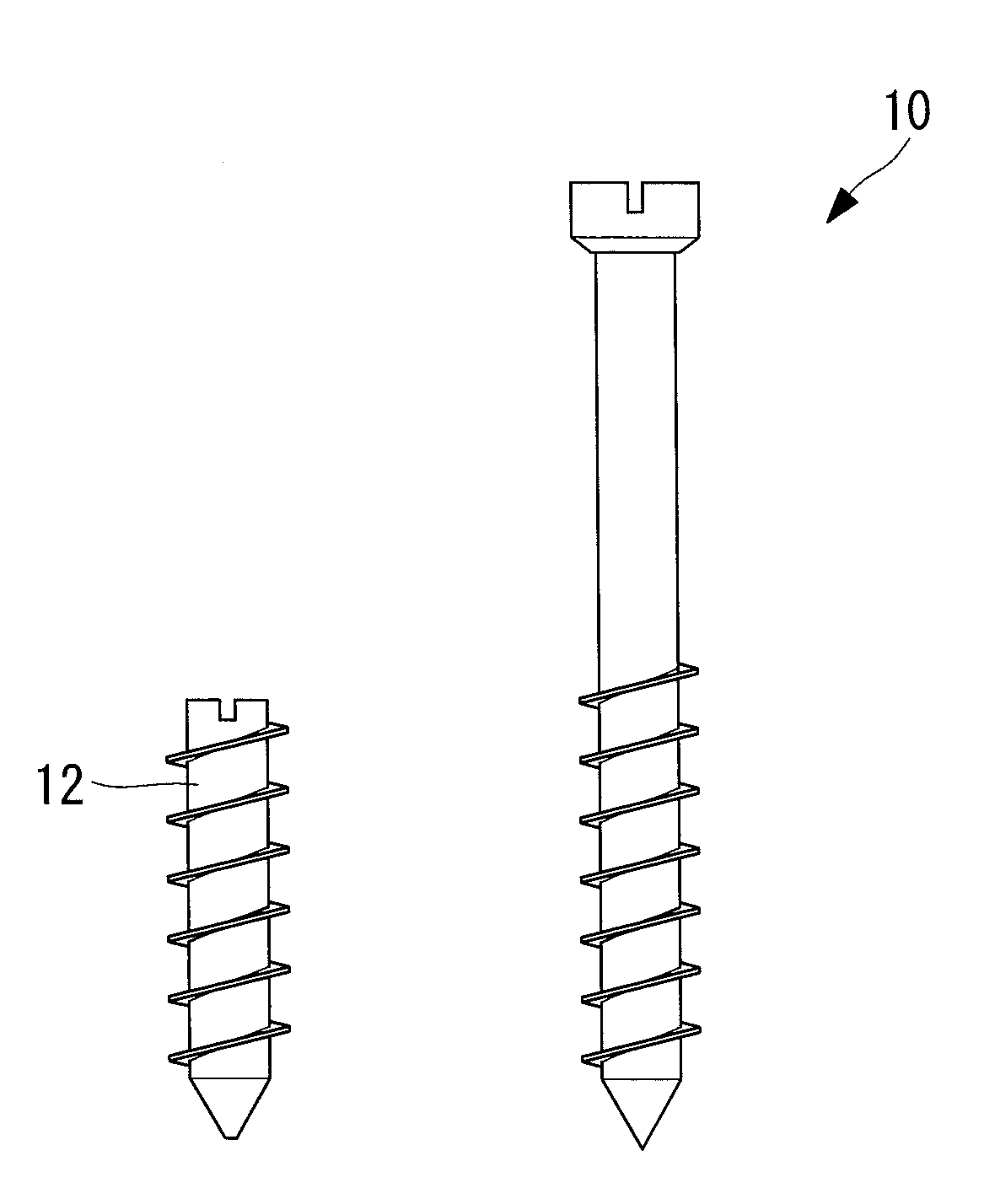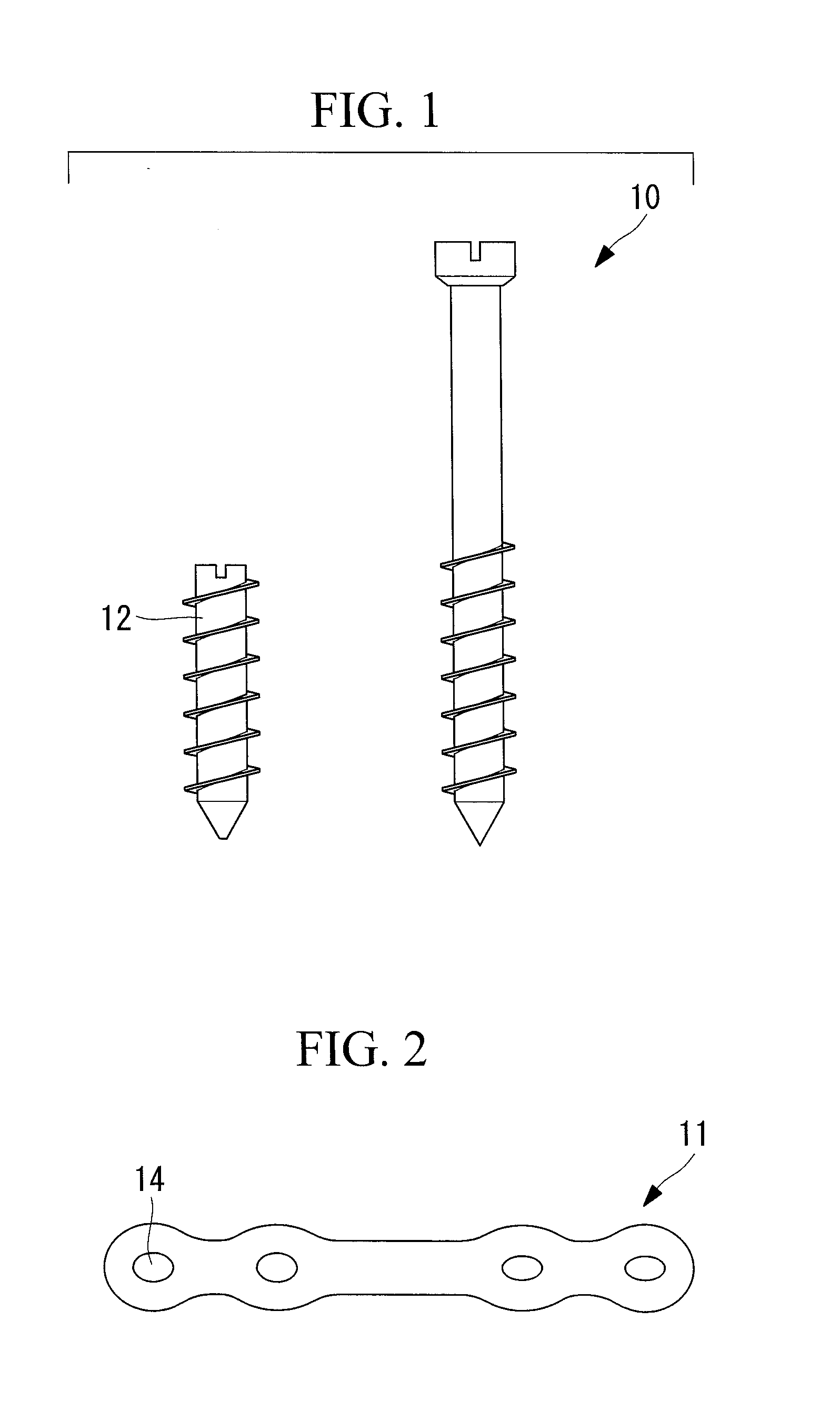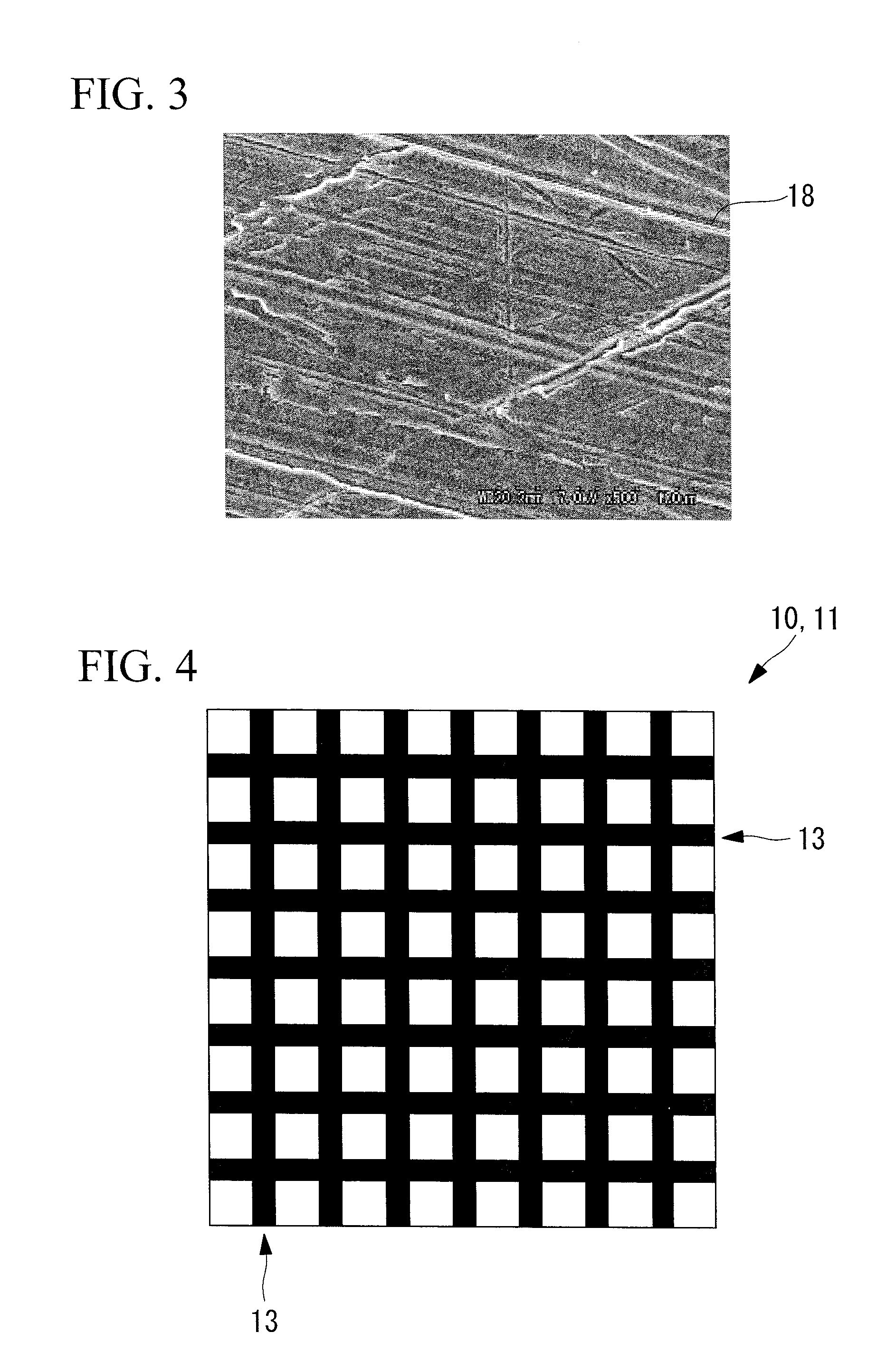Biodegradable implant and fabrication method thereof
- Summary
- Abstract
- Description
- Claims
- Application Information
AI Technical Summary
Benefits of technology
Problems solved by technology
Method used
Image
Examples
first embodiment
[0032]A biodegradable implant and a fabrication method thereof according to a first embodiment of the present invention will be described below with reference to the drawings.
[0033]The biodegradable implant according to this embodiment is provided with implant substrates (biodegradable magnesium members) 10 and 11, shown in FIGS. 1 and 2, and anodic oxide layers (see FIG. 6) formed so as to coat surfaces of the implant substrates 10 and 11.
[0034]The implant substrates 10 and 11 are formed of a magnesium alloy , which degrades in a living organism, and, for example, a WE43 alloy that contains rare earth elements, such as, for example, neodymium, zirconium, and so forth, is employed. By employing such a magnesium alloy containing rare earth elements, it is possible to enhance the strength of the implant substrates 10 and 11.
[0035]The shapes of the implant substrates 10 and 11 take a shape in accordance with the usage thereof, for example, a screw shape or a plate shape. The implant su...
second embodiment
[0069]A biodegradable implant 1 and a fabrication method thereof according to a second embodiment of the present invention will be described below with reference to FIGS. 11 and 12.
[0070]In the first embodiment, the biodegradable implant is provided with the anodic oxide layer as a coating layer; alternatively, the biodegradable implant according to this embodiment is provide with an intermediate layer formed of high-purity magnesium between the implant substrate and the anodic oxide layers.
[0071]Specifically, as shown in FIG. 11, the biodegradable implant 1 according to this embodiment is provided with an implant substrate (biodegradable magnesium member) 2 that serves as a base material, an intermediate layer (high-purity magnesium layer or coating layer) 3 that coats the surface of the implant substrate 2, and an oxide layer (coating layer) 4 that coats the outer side of the intermediate layer 3.
[0072]The implant substrate 2 is formed of a magnesium alloy in which other elements ...
example of second embodiment
[0092]Next, an Example of the above-described second embodiment will be described with reference to FIGS. 13 to 18.
[0093]A magnesium alloy used as the material for an implant substrate in this Example is a WE43 alloy that contains yttrium, neodymium, and rare earth elements as additives.
[0094]First, by immersing the implant substrate in 2.2 wt % aqueous phosphoric acid solution for one minute, the surface of the implant substrate was subjected to acid treatment (acid treating step or SB1). Next, the implant substrate is washed with ion-exchanged water (SB2), and the implant substrate was subjected to neutralization by washing it with 18 wt % aqueous sodium hydroxide solution (SB3).
[0095]Here, the results of observing the surface of the implant substrate by using a scanning electron microscope before treatment with the aqueous phosphoric acid solution and after the treatment are shown in FIG. 14 and FIG. 15, respectively. In the figures, white dots indicated by arrows are yttrium par...
PUM
| Property | Measurement | Unit |
|---|---|---|
| Length | aaaaa | aaaaa |
| Acidity | aaaaa | aaaaa |
| Width | aaaaa | aaaaa |
Abstract
Description
Claims
Application Information
 Login to View More
Login to View More - R&D
- Intellectual Property
- Life Sciences
- Materials
- Tech Scout
- Unparalleled Data Quality
- Higher Quality Content
- 60% Fewer Hallucinations
Browse by: Latest US Patents, China's latest patents, Technical Efficacy Thesaurus, Application Domain, Technology Topic, Popular Technical Reports.
© 2025 PatSnap. All rights reserved.Legal|Privacy policy|Modern Slavery Act Transparency Statement|Sitemap|About US| Contact US: help@patsnap.com



